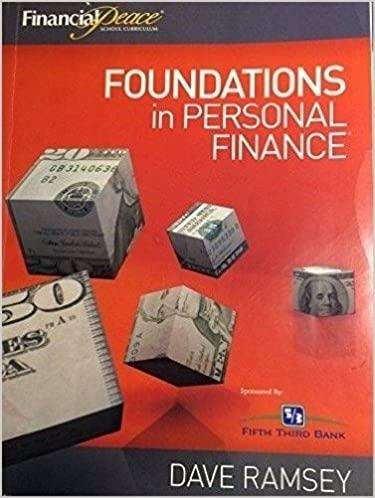Answered step by step
Verified Expert Solution
Question
1 Approved Answer
Suppose that the risk - free rate is 3 % and that the corresponding optimal risky portfolio has an expected return of 1 5 %
Suppose that the riskfree rate is and that the corresponding optimal risky portfolio has an
expected return of and a standard deviation of Consider an investor with preferences
represented by the utility function where
a What fraction of her wealth should she invest in the risky portfolio?
b Should she invest more or less fraction of her wealth in the optimal risky portfolio if she is
more riskaverse? Why?
c Should she invest more or less fraction of her wealth in the optimal risky portfolio if the
optimal risky portfolio offers a higher expected return but the same standard deviation Why?
d If the riskfree rate is higher, what would you expect the optimal risky portfolio to differ from
the current one for riskfree rate in terms of expected return and standard deviation?
e Now suppose that the investor faces a higher riskfree rate when borrowing because you are
facing more borrowing constraints than the government, or people won't allow you to borrow at
the same rate as the government Specifically, the investor may lend at a riskfree rate of but
has to borrow at a riskfree rate of Assume for simplicity that the optimal risky portfolio is
the same for either riskfree rate or riskfree rate, ie with an expected return of and
a standard deviation of this should not be the case in reality, as you will find out in
question d What fraction of her wealth should the investor now put in the risky portfolio?
Hint: The riskfree rate of will imply a fraction of wealth invested in the optimal risky
portfolio. The riskfree rate of will imply another fraction of wealth invested in the
optimal risky portfolio. However, is only available for the investor to lend so she cannot
borrow to invest more than her wealth to invest in the optimal risky portfolio If she wants to
borrow to invest more than her wealth to invest in the optimal risky portfolio, she will have to go
with riskfree rate but she won't be able to lend at rate
The key here is: you would need to understand what weights in the optimal risky portfolio mean
she will lend, and what weights mean she will borrow.
f What is the expected return and standard deviation of the portfolio that you found in e

Step by Step Solution
There are 3 Steps involved in it
Step: 1

Get Instant Access to Expert-Tailored Solutions
See step-by-step solutions with expert insights and AI powered tools for academic success
Step: 2

Step: 3

Ace Your Homework with AI
Get the answers you need in no time with our AI-driven, step-by-step assistance
Get Started


